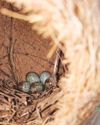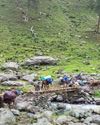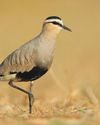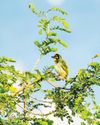About earthworms, Charles Darwin said, “It may be doubted whether there are many other animals which have played so important a part in the history of the world, as have these lowly organised creatures.”

In any primary textbook on ecology, there will be a diagram of an ecological pyramid showing primary producers at the bottom and large predators on the top. In between we
have primary consumers, decomposers and secondary consumers, till we reach the top occupied by predators such as large cats, large raptors, and large sharks in oceans. The usual tendency is to see the top few layers and get excited, as the top two or three layers represent the glamorous species. Incidentally, we humans as predator and consumer also sit at the top of this ecological pyramid.
This ecological pyramid, called trophic pyramid in more prosaic language, is also called food pyramid or energy pyramid, although there are subtle differences in all these pyramids depending upon what we are dealing with (food chain, energy transfer or ecological functions). We also have biomass pyramid which shows the amount of living or organic matter present at each trophic level. This leads us to productivity pyramid that shows the turnover of biomass at each level. People with a statistical bent of mind have created a number pyramid that shows the number of organisms at each trophic level. To know more about these pyramids, I suggest the readers refer to any good ecology book, particularly Eugene P. Odum’s Fundamentals of Ecology which is a classic book for the last 6 decades.
Whichever pyramid we look at, graphically it has a large base (basal trophic level consisting of primary producers, i.e. plants) and a tapering cone till we reach the top where top consumers sit, mainly consisting of large predators. The tragedy of our conservation movement is that we only see the top layers and forget the bottom, which is the basis of the functioning of any ecosystem, be it forest, grassland, wetland or sea. Research priorities and funding remain on the top two or three trophic levels. Glamour controls conservation priorities and funding.
This story is from the June - August 2017 edition of Saevus.
Start your 7-day Magzter GOLD free trial to access thousands of curated premium stories, and 8,500+ magazines and newspapers.
Already a subscriber ? Sign In
This story is from the June - August 2017 edition of Saevus.
Start your 7-day Magzter GOLD free trial to access thousands of curated premium stories, and 8,500+ magazines and newspapers.
Already a subscriber? Sign In

Staying ALIVE!
The importance of getting to the root causes of conflict with wildlife, is essential. Its mitigation will guarantee the very survival of all species.

Frames from the WILD
A few amazing shots from a horde of incredible ones!

WAKE UP!
A frightening thought a world without wildlife, mornings without birdsong, and all that we take for granted! We must realise the dangers threatening the beauteous green world and its inhabitants around us!

Dolphin DILEMMA!
A crucial article to highlight the significance, and plight of Our riverine friends.

Gecko Quest!
The authors take us on the trail of a gecko from West Bengal, through the hills of the Bankura district.

Endangered EXOTICA!
The author takes us on an exotic ride into the forests of Malaysia, allowing us glimpses of the beauties of its wildlife!

Mellifluous Magpie!
Immerse yourselves in the world of the musical and glorious Magpie Robin! The authors help acquaint us with this beautiful bird.

Think Different!
The author brings to us the very real concern for the horses employed around pilgrimage sites in India.

Take Heed!
The authors make a case for the conservation of the rare and lesser-known Sociable Lapwing.

Close Encounters!
The author introduces us to two amazing yet very different bird species, showing us the diversity of our ecosystems,